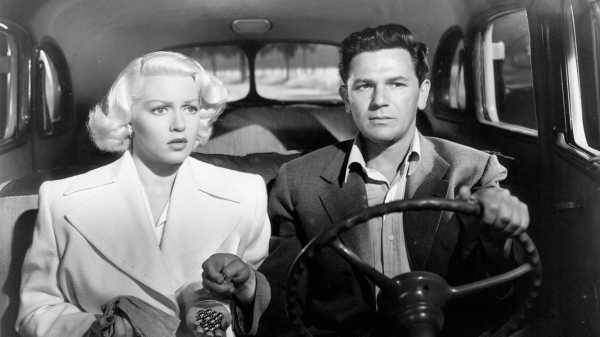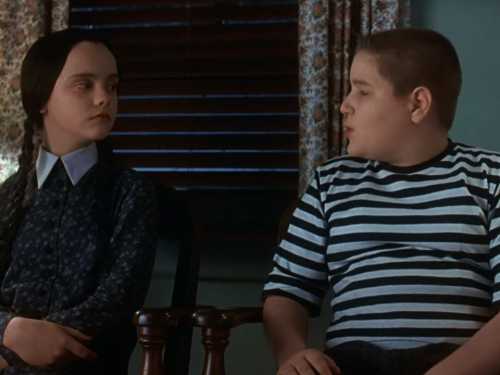
The Criterion Channel is hosting a retrospective of films featuring the late John Garfield, a superstar of the nineteen-forties whose body of work has long gone under-recognized. In the course of a career that stretched from the height of the studio system to the depths of the Red Scare, Garfield pioneered a new, naturalistic approach to acting for the camera, one rooted in the same techniques that would soon be called the Method. Garfield died in 1952, his performances overshadowed by the actors who followed him—particularly Marlon Brando, who rose to fame playing Stanley Kowalski in “A Streetcar Named Desire,” a role that Garfield turned down. Brando, despite his protestations to the contrary, was often credited as the first Method movie star, the one who inspired generations of young men to move to New York and learn the Method at its high temple, the Actors Studio. It’s tempting to see Garfield, who worked as the doorman for the first session of the Actors Studio, in 1947, as also holding the door of acting history open for Brando, Montgomery Clift, James Dean, Ben Gazzara, Paul Newman, and others to walk through. But Garfield is much more than a footnote. He was far better than his contemporaries at solving the puzzle of how to take the new acting techniques coming out of the New York theatre during the thirties and forties and adapt them for the screen. His best performances have a timeless brilliance; they feel, somehow, classical and contemporary at once.
John Garfield never wanted to be a movie star. He was a creature of the Great Depression whose early life included familial neglect and riding the rails reciting “The Raven” for his supper; money would often shape his life and career choices. In the mid-nineteen-thirties, he acted with the Group Theatre, a company responding to the Depression with a utopian, left-wing vision of the American character, and an ensemble model of acting rooted in the teachings of the great Russian director Konstantin Stanislavski. Stanislavski’s ideas are so complicated that people have argued over them for more than a century, but his main goal was to create a series of exercises, techniques, and approaches that would allow performers to truly “experience” a role, living a character’s reality while remaining in control as an actor. The Group included many of the future stewards of acting instruction in America—Lee Strasberg, Stella Adler, Sanford Meisner—as well as the directors Elia Kazan and Harold Clurman. It was the most exciting theatre company in America, but it rarely found financial success. Garfield left the company to better support his family and because he felt cheated out of a role that had been promised to him. He moved to Los Angeles, making his film début, in 1938, in “Four Daughters,” for which he received an Oscar nomination.
If you aren’t a film buff, you most likely know Garfield from the 1946 film of “The Postman Always Rings Twice,” in which he plays the lunkhead patsy to Lana Turner’s murderous femme fatale. It’s a fine film, deserving of its classic status, but many other delights await you in the Criterion’s retrospective. Garfield’s performances marry subtle physical shifts with roiling undercurrents of subtext and emotion, revealing as much as possible with the smallest of gestures and shifts of facial expression. Even in his early work under contract with Warner Bros., Garfield seems at home in the routines of his characters, and reveals them to us through carefully chosen, perfectly executed actions. He understands how much of acting is reacting—letting what he called “that monster, the camera,” see you think without overdoing it.
One of the best examples of Garfield’s combination of deep feeling and minimalist restraint can be found in “Dust Be My Destiny” (1939), the earliest film in the Criterion series. In it, he plays Joe Bell, a defiant drifter who is wrongfully accused of murder, running from the law with his wife, Mabel, who’s played by Priscilla Lane. His performance is a perfect mixture of sweetness and rebellion; it reveals both the exoskeleton his character has grown to protect himself from the deprivations of the Great Depression and the good kid hiding underneath it. Particularly impressive is a mostly wordless sequence in which Joe and Mabel break up and reconcile in a few longing glances. Garfield’s entire agonized thought process—his love for his wife, his worry about the future, his hurt pride at being unable to provide for her—dance over his face in a matter of seconds.
While he played the young lover many times, Garfield carved out a simultaneous reputation for tough-guy roles. In “Out of the Fog” (1941), he plays Harold Goff, a gangster on the make, seducing Ida Lupino’s Stella Goodwin while extorting her father, Jonah (Thomas Mitchell), and the other immigrants of Sheepshead Bay. Garfield’s transformation from romantic hero to scofflaw is subtle but convincing nonetheless, and it relies upon his mercurial physical presence on camera. A compact man who stood only five feet seven, Garfield possessed both a dense muscularity and a delicate grace in his small physical movements, particularly with his hands. “Dust Be My Destiny” is one of several performances that emphasize his smallness—the sense that the world looms over him, ready to hunt him down. In films such as “Out of the Fog,” his assuredness makes him seem larger than he really is, or like his body has its own gravitational pull; he uses this to transform his charm into something threatening, while his smile—so boyish and winning in romantic comedies—becomes suffused with menace.
His tough guys weren’t always villains. In “The Fallen Sparrow” (1943), a crackerjack thriller that is often difficult to find, Garfield plays John (Kit) McKittrick, a Spanish Civil War veteran who has returned to Manhattan high society to investigate the murder of his best friend. Soon, he is being hunted by a Nazi spy ring and impaired by resurgent P.T.S.D. that surfaces in involuntary twitches and panic attacks. Like Hamlet before him, Kit solves the mystery through acting: he pretends to be naïve, or drunk, or in love, or far less intelligent than he is, in order to trick people into revealing themselves. The thrill of the film lies in Garfield’s blurring of the lines between his performance and Kit’s; we never quite know which is which, or where to find Kit’s true self.
In 1945, John Garfield gave a lecture to the Actors’ Laboratory Theatre, a Stanislavski-based school and playhouse run by alumni of the Group. “I would much rather talk about the theatre because I think the movies are not an actor’s medium,” he said. “Movies are a writer’s and director’s medium.” At the time, Garfield was nearing the end of his contract with Warner Bros., and growing increasingly discontented. He had made twenty-three movies in the previous seven years, and he had little control over which projects he appeared in, the quality of their scripts, or their directors. While his films had mostly succeeded at the box office, he was personally proud of only a few of them. “My problem in movies has been to find the truth,” he told the Actors’ Lab. “When I don’t, I fail miserably.” He yearned for a career that would allow him to demonstrate his versatility and to work on material with which he felt more of a connection.
A year later, he made “Humoresque” (1946), a gender-flipped “A Star Is Born,” with Garfield as a young classical-music phenom and Joan Crawford as the older, wealthy alcoholic who takes him under her wing. It’s an extraordinary melodrama, one of the best of the period, and one where Garfield gets to be the hard-bitten street tough and the charming young lover simultaneously. While it remained one of Garfield’s personal favorites from his time at Warner Bros., his contract with the studio ran out while he was filming it, and he decided to take a chance on having a career on his own terms. In the next few years, he turned down several projects—including future classics such as “Out of the Past” and “Nightmare Alley”—to work with Enterprise, an upstart independent production company that promised artists near-complete freedom. After making “Body and Soul,” Enterprise’s lone profitable film, he moved back to New York City to return to his first love, theatre, starring in “Skipper Next to God,” which was directed by his old mentor Lee Strasberg. Garfield was a proud if unobservant Jew (his birth name was Jacob Julius Garfinkle), and he connected with “Skipper” ’s story about the plight of Jewish refugees; he starred in the production for a paltry three hundred dollars a week, from January to March, 1948.
During those months, Americans could also catch Garfield onscreen in either “Body and Soul” (for which he would soon be nominated for an Oscar) or “Gentleman’s Agreement,” which won Best Picture, Best Actress, and Best Director. He was powerful, wealthy, popular with audiences, and respected by his peers. His career, with its emphasis on versatility, seriousness, artistry, and political commitment, provided a template that generations of male movie stars to come, from Paul Newman to Robert De Niro and Leonardo DiCaprio, would follow. Yet it would all fall apart with remarkable speed. Less than five years after “Skipper” opened, John Garfield would be dead, a victim of a bad heart and the House Un-American Activities Committee.
HUAC’s investigations of Hollywood had begun picking up steam in early 1947, and Warner Bros., which had made several pro-Russian films to help the war effort, was its frequent target. In October, 1947, Jack Warner declared in testimony before Congress that Communists had “burrowed into many American industries . . . wherever they may be, I say let us dig them out and get rid of them.” Ten screenwriters and directors who had been called to testify refused to coöperate with the committee, and, a month later, they were arrested for contempt of Congress and barred from working in Hollywood. The blacklist, which, as the years passed, would consume the careers of dozens of actors, writers, and directors suspected of communist sympathies, had begun.
Garfield enlisted in the anti-HUAC effort, joining with the Committee for the First Amendment and performing in a radio program called “Hollywood Fights Back.” When asked about his own politics, he would tell reporters that he was a New Deal Democrat. He had performed overseas for the troops, and had passed an F.B.I. review to do so with flying colors. He wasn’t about to worry about what he called “a lot of stupid name-calling.” But Garfield was clearly vulnerable: as a supporter of progressive causes; as a past member of the Group Theatre, a leftist company with Communist members; and by way of his wife, Robbe, who was formerly a member of the Communist Party, and had even hosted Party meetings in their Los Angeles home.
Garfield responded to HUAC by working as much as he could while protesting his innocence. Three of the five movies that he completed during this period are in the Criterion Channel’s retrospective; they are three of his finest films, and rarely available to stream legally. In the first, “Force of Evil” (1948), he plays Joe Morse, a corrupt attorney trying to help the Mob take over the numbers racket in New York and transform it into a legitimate lottery. Doing so requires Morse to crush his older brother (a soulful Thomas Gomez), who runs a small-time numbers game that paid for Morse’s law degree. In just seventy-eight minutes, the writer-director Abe Polonsky weaves a nearly Shakespearean tragedy out of the clash between the brothers, as everything Joe does to help his brother makes matters worse for them both. Twenty-six minutes in, viewers are treated to a taxicab speech to rival Brando’s “I could’ve been a contender” scene in “On the Waterfront.” As Joe puts the moves on his brother’s secretary (Beatrice Pearson), Garfield moves from confident flirtation, to philosophical self-justification, to abject self-loathing in a little more than three minutes. Throughout the sequence, Garfield seems less like an actor gearing up to deliver a big speech than a normal person letting his guard down and getting lost in his own thoughts.
By 1950, Garfield’s career was effectively over; his name had appeared in “Red Channels,” a pamphlet listing suspected Communists in the entertainment industry. Most of the hundred and fifty-one people named in “Red Channels,” including Dashiell Hammett, Zero Mostel, and Stella Adler, found themselves unable to get work in film and broadcasting. That year, Warner Bros. quietly released “The Breaking Point” and pulled it from theatres shortly after its release; it is Garfield’s greatest film. An adaptation of Hemingway’s “To Have and Have Not,” the movie stars Garfield as Harry Morgan, a down-on-his-luck ship captain who runs into financial trouble in Mexico and takes a job smuggling Chinese migrants to the United States. The job goes wrong, and Morgan ends up under investigation and in dire financial straits. The film allows Garfield to draw together all the various selves developed in the course of his career: the drunken flirt, the tender lover, the doomed rebel, the overconfident tough guy, the hardened cynic, the self-loathing dreamer. Particularly wonderful are his scenes with Phyllis Thaxter, who plays Morgan’s insecure wife, Lucy. It’s rare that Garfield plays a man with a stable home life; Morgan loves his wife and wants to be a good father to his children. This dynamic adds a new maturity to Garfield’s work, and colors Morgan’s downfall with deeply moving nuance.
In April of 1951, Garfield finally testified before Congress. He tried to give noncommittal answers, and perjured himself by claiming that he didn’t personally know any Communists. A couple of months later, United Artists quietly sneaked “He Ran All the Way” (1951), Garfield’s final film, into theatres. The film is a sweaty, claustrophobic nightmare in which he plays Nick Robey, a petty criminal who takes a family hostage after a robbery goes south. In sharp contrast to Harry Morgan or Joe Morse, Nick is a creature of pure instinct and little intelligence. Garfield’s scenes with Shelley Winters, who plays the daughter of the family he’s terrorizing, are the rawest of his career; his mixture of lust, brutality, and tenderness is deeply unsettling. According to her memoir “Shelley II,” Winters could tell Garfield was struggling during the film. Despite a history of heart trouble, Garfield drank and smoked and overexerted himself. Having often played men hunted—by the law, by society, by their own demons—he was now the quarry, onscreen and off.
Garfield died in May, 1952, of a heart attack, amid rumors that he was about to be investigated for perjury. He had separated from Robbe, his recent star turn in “Peer Gynt” on Broadway had flopped, and he was even having trouble getting television work. It’s tempting to wonder what would have happened had he lived. (What would a John Garfield performance look like in the films made shortly after Brando’s breakthrough, such as “12 Angry Men” or “Cat on a Hot Tin Roof”? Or in color? Or as an elder statesman presiding over New Hollywood in the nineteen-seventies?) But we can comfort ourselves with his groundbreaking body of work, one that maintained the complexity and dignity of the individual, even in the most fraught and dangerous of circumstances. ♦
Sourse: newyorker.com






